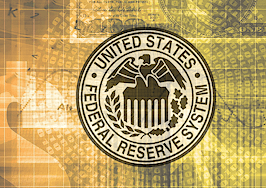- This rate move is global: Europe and Japan have backed away from additional stimulus.
Mortgages climbed above 3.50 percent for the first time in two solid months on Friday.
Not far — but the 10-year T-note is also now trading 1.67 percent after two solid months between 1.50 percent and 1.60 percent.
A staccato list of short thoughts on causes and consequences….
When do rates move?
Rates move up on strong economic data, down on lousy news. Not this time: the two ISM (Institute of Supply Management) survey indices tanked in August. The manufacturing one fell below 50, dismissed as “just manufacturing.”
But this week the service sector companion thumped to 51.4, 70 percent of the economy and the worst reading since 2010.
This rate move is global. Both German and Japanese 10-year bonds are trading above zero!
The most immediate cause of the rate pop: Late last week, both the European Central Bank and Bank of Japan in the last 24 hours have backed away from additional stimulus, and possibly from extensions of current bond-buying.
Go back a long way, to 2007. The recession officially began that December.
The Fed had begun to chop rates and inject liquidity the summer before, and by summer 2008 that traditional easing had no effect. Then Lehman. All during 2008 this marker of catastrophe: Treasury yields fell, and yields on everything else went up (if still trading).
The spread between mortgages and the 10-year, normally 1.80 percent, exploded to over 3.00 percent. That market event triggered the Fed’s first new-age heroics, buying MBS (mortgage-backed securities) and Treasurys to stop the panic, to get long-term rates down and to engineer gains in other asset prices, homes and stocks.
Since then, every alleged free-marketeer, every anti-government type, many talking-head investment managers and more have condemned the Fed’s actions then and since — and insisted that “they didn’t work.”
Horsefeathers. Did, too. Here in the U.S.A., they worked well.
What happened elsewhere?
The European Central Bank (ECB) got it wrong. Jean Claude Trichet raised the ECB cost of money. The silly damned euro may have made rescue impossible, but the ECB made all worse until Draghi joined QE (quantitative easing) five years too late and too small.
Japan enacted a tax increase, then embarked on fantastic QE. The BOJ (Bank of Japan) has been late every time for 25 years.
The Fed stopped QE two years ago, but still owns $4 trillion in MBS and Treasurys, and it began its ridiculous hold-us-back.
Wolf! Wolf! It finally hiked 0.25 percent ten months ago. Woof.
The U.S. has a recovery of sorts. Nowhere else: In deepening panic the ECB and BOJ entered NIRP, negative interest rate policy, which either has not worked or has made things worse. (Sidebar: NIRP works for little places, like Switzerland.)
Eight years later …
It’s been a hell of an eight years. The fundamental global economic problems are unchanged: We have entered a demographic nightmare never seen before, and predatory trade and currency practices (China, Germany) have spread deflation and unemployment, and now threaten a global (if slow motion) trade war.
Most people in and near markets who do not carry political or doctrinal baggage have known for a year that the central banks are done. If not now counterproductive, by a year ago reached a state of hopelessly diminishing returns, and would have to try something else.
There is nothing else except the helicopter: parliaments to enact new and immense spending, the money directly printed by the central banks. The various governments are not prepared for the news.
The central banks are astride the tiger and now would like to dismount without ending up inside. They can’t.
Object lesson on Friday: The U.S. 10-year has risen above the prior trading range by 0.07 percent, and the DOW was down 1.67 percent, the broader Russell 2000 open-manholed 2.67 percent.
Rates aren’t going far — collapsing assets will prop bonds even if central banks can’t.
The Fed meets September 21. Yellen has limped along for nearly two years “data dependent.”
Dodgeball won’t do it anymore: we need a convincing public rationale. Yellen’s problem is not her making.
Despite “normalization” cries inside and out of the Fed, no one has any idea what is normal now, nor what to do about whatever this is.

The 10-year T-note in the last year.
The 10-year T-note in the last year.

The 10-year in the last week, yields falling on lousy economic news
The 10-year in the last week, yields falling on lousy economic news, then the jump beginning yesterday on the ECB and BOJ trying to exit the tiger cage.

The Fed-sensitive 2-year T-note in the last year.
The Fed-sensitive 2-year T-note in the last year. A little rise in the last week, but markets in total disbelief that the Fed will tighten — or that if it does it will soon be back.

The next two charts are from the UN Population Division.
The next two charts are from the UN Population Division. Not only new normal ahead, but never-before-seen ahead. And deflation written all over it.
Lou Barnes is a mortgage broker based in Boulder, Colorado. He can be reached at lbarnes@pmglending.com.











